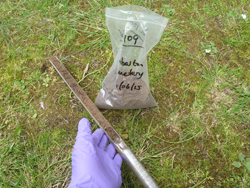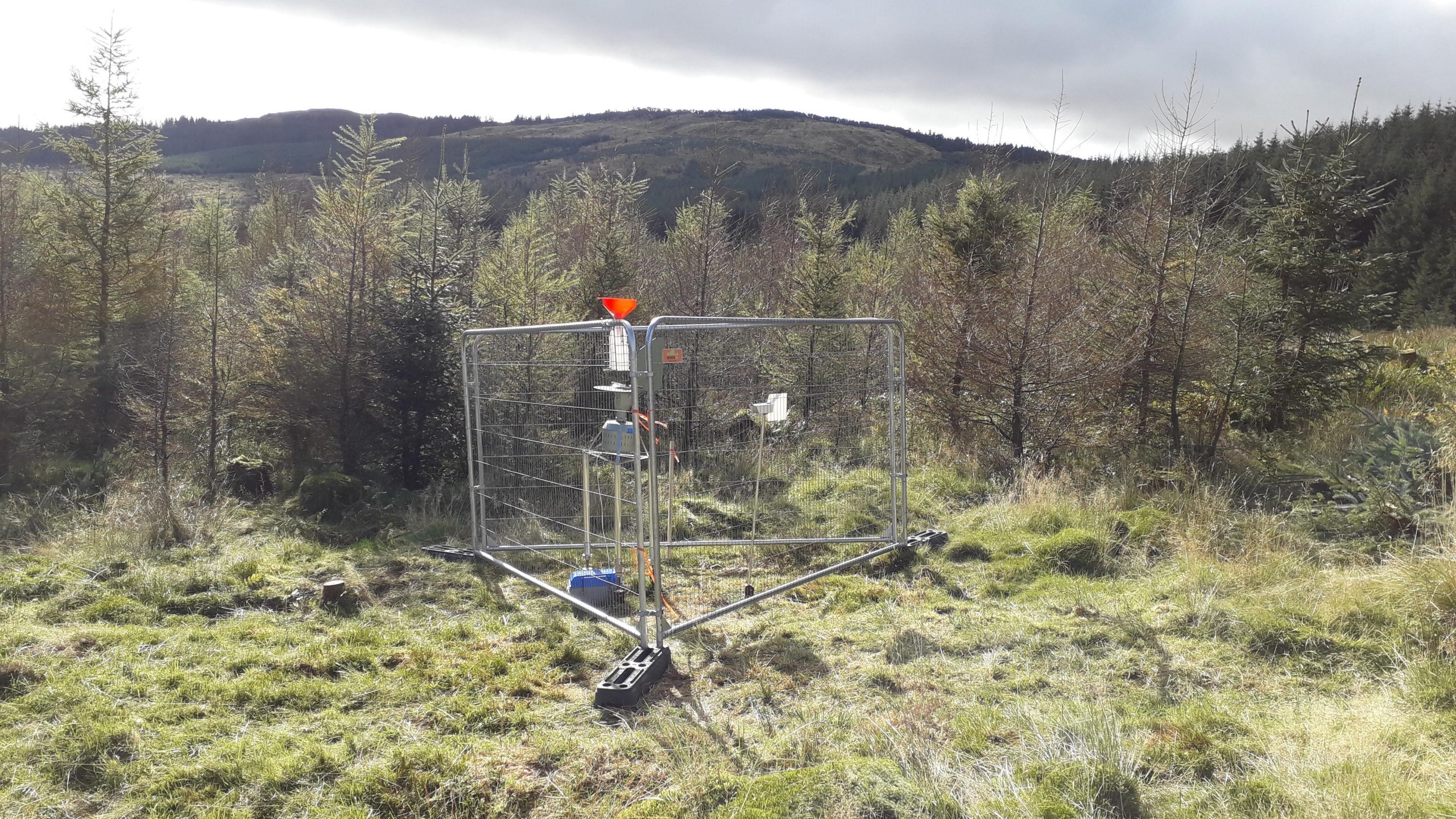Summary

 Invasive Phytophthora species are posing serious threats to forest ecosystems in Britain, yet the distribution and diversity of Phytophthora spp. present in this country is largely unknown. Initial outbreaks often occur on host trees located in public parks and gardens. These highly disturbed sites with diverse planting practices may indeed act as harbours for invasive Phytophthora pathogens which are particularly well adapted to surviving in soil. This project uses Illumina high throughput metabarcode DNA sequencing to examine the diversity of Phytophthoras at a range of forest and woodland sites in order to better predict risk.
Invasive Phytophthora species are posing serious threats to forest ecosystems in Britain, yet the distribution and diversity of Phytophthora spp. present in this country is largely unknown. Initial outbreaks often occur on host trees located in public parks and gardens. These highly disturbed sites with diverse planting practices may indeed act as harbours for invasive Phytophthora pathogens which are particularly well adapted to surviving in soil. This project uses Illumina high throughput metabarcode DNA sequencing to examine the diversity of Phytophthoras at a range of forest and woodland sites in order to better predict risk.
Research Objectives
- Examine Phytophthora diversity in soil at forest, woodland and public garden sites in Scotland.
- Assess the feasibility of using Illumina metabarcoding technology combined with spore trapping for longer-term monitoring of aerial Phytophthora diseases, such as P. ramorum.
- Provide evidence to inform biosecurity and remediation policy aimed at limiting the introduction, spread and impact of Phytophthora diseases.
Latest Update
Results so far
Illumina sequencing was used to analyse Phytophthora species diversity in soil samples collected from fourteen public garden/amenity woodland sites in Scotland. Sites chosen either had previous Phytophthora outbreaks or were regarded as high risk due to importation of large quantities of plants/soil in recent years. A high diversity of Phytophthoras was detected at all sites, corresponding overall to 23 Phytophthora species as well as twelve as-yet undescribed oomycete sequences. Phytophthora pseudosyringae and P. austrocedri, both of which cause serious damage to trees and are regarded as fairly recent introductions to Britain, were the two most abundant Phytophthora species detected and were present at nearly all of the sites.
The diversity of aerial Phytophthora species is also being investigated by Illumina metabarcoding analyses of samples collected from wind vane, Burkard and rainfall spore traps located at forest and woodland sites in south Scotland, where P. ramorum is having a serious impact on larch. Validation of the capture efficiency of the wind vane traps is ongoing to determine whether this method is suitable for a research/surveillance programme aimed at increasing our understanding of P. ramorum dispersal distances and seasonality of dispersal in relation to climate variables. Results so far suggest that metabarcoding enables the detection and monitoring of a broad range of Phytophthora species in spore traps, facilitating early identification of new outbreaks.
Practical recommendations for site managers:
- Establish good hygiene practice to avoid transfer of soil-borne Phytophthora spp. within site, and from one site to another. Such practices include keeping public access to hard-core pathways and ensuring staff clean boots, tools and vehicles before moving from one location to another on the site.
- Steps should also be taken to ensure that healthy planting stock is sourced from reputable nurseries with a documented disease management plan. See flier on Plant Health Considerations for Planting Schemes.
Our Involvement
FR is leading the work
General Content
Publications
Plant Health Considerations for Planting Schemes (PDF-2 MB)
Green, S., Riddell, C.E., Frederickson-Matika, D., Armstrong, A.C., Elliott, M., Forster, J., Hedley, P.E., Morris, J., Thorpe, P., Cooke, D.E.L., Sharp, P.M., Pritchard, L. 2020. Diversity of woody host-infecting Phytophthora species in public parks and botanic gardens as revealed by metabarcoding, and opportunities for mitigation through best practice. (PDF-3 MB) Sibbaldia 18, 67-82.
Riddell, C.E., Frederickson-Matika, D., Armstrong, A.C., Elliot, M., Forster, J., Hedley, P.E., Morris, J., Thorpe, P., Cooke, D.E.L., Pritchard, P., Sharp, P.M., & Green, S. (2019). Metabarcoding reveals a high diversity of woody host-associated Phytophthora spp. in soils at public gardens and amenity woodlands in Britain. PeerJ, DOI 10.7717/peerj.6931
Funding & Partners
- Scottish Forestry
- Forestry and Land Scotland
- Forestry Commission England
